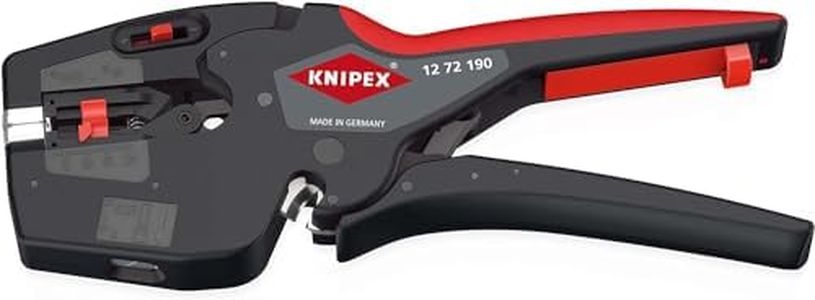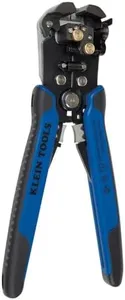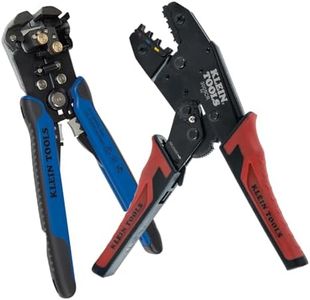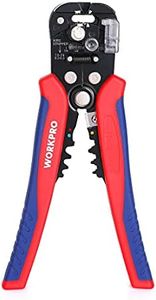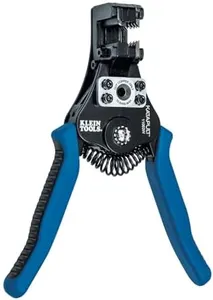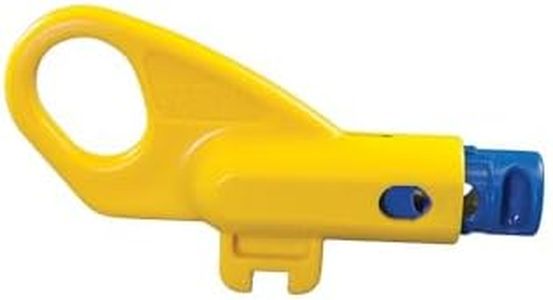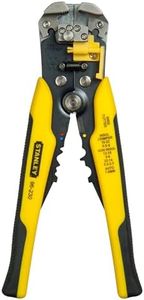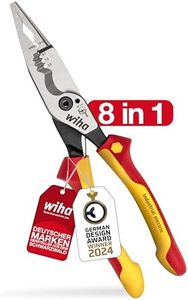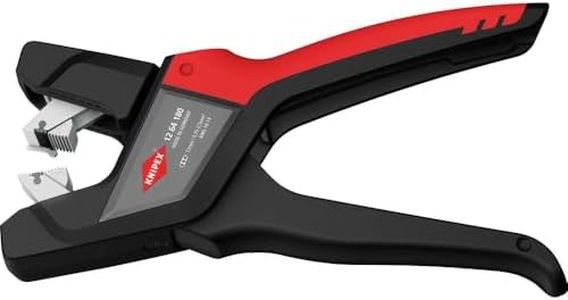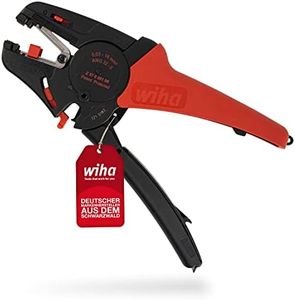We Use CookiesWe use cookies to enhance the security, performance,
functionality and for analytical and promotional activities. By continuing to browse this site you
are agreeing to our privacy policy
10 Best Wire Strippers
From leading brands and best sellers available on the web.By clicking on a link to a third party's website, log data is shared with that third party.
Buying Guide for the Best Wire Strippers
Wire strippers are essential hand tools for anyone working with electrical wiring, from homeowners making simple fixes to professionals handling major installations. The main job of a wire stripper is to remove the insulation from wires without damaging the metal underneath. Choosing the right wire stripper not only makes the task easier but also helps you work safer and more efficiently. To find the best fit for you, it’s important to understand which features really matter and how these features impact your day-to-day use.Wire Gauge RangeWire gauge range refers to the sizes of wires that the stripper can handle, usually measured in American Wire Gauge (AWG) or millimeters. This is important because using the wrong-sized opening can damage the wire or fail to strip the insulation properly. Wire strippers often come with multiple notches for different wire gauges; lower AWG means thicker wires, and higher numbers are for thinner wires. Some strippers focus on a narrow range for fine electrical work, while others handle a broader range for general use. To pick the right stripper, consider the types and sizes of wire you most often work with—if you mostly handle home electronics, narrower ranges might suit you, but for household or automotive projects, a broader range is better.
Type of Wire StripperThere are several basic types: manual, automatic (self-adjusting), and combination style (which may include cutting and crimping tools). Manual strippers require you to match the correct notch to your wire size and squeeze to strip; they offer the most control and are a classic choice for careful work. Automatic strippers adjust to the size of the wire and strip in one motion, making them fast and convenient, especially for repetitive tasks. Combo strippers add functions but may sacrifice comfort or precision. Your typical projects and preference for speed versus control should guide your choice here—for quick jobs or if you’re not sure of wire size, automatic is useful; for occasional or precision work, manual may be better.
Build Quality and MaterialBuild quality includes the overall sturdiness and the material of the handles and blades. Steel blades are standard and provide lasting sharpness, while coated or insulated handles improve grip and safety during electrical work. Higher quality tools feel solid and operate smoothly, minimizing the risk of breaking or misalignment. If you use your strippers often or for tough wires, seek out strong, well-constructed models; for light, occasional use, comfort in the hand might matter most.
Handle Comfort and ErgonomicsComfort matters, especially if you’ll be using the tool for extended periods. Some handles come with padded grips or ergonomic shapes that reduce hand fatigue and provide better leverage. This spec is important if you have weaker grip strength or are prone to hand strain. If you expect to use your strippers for longer tasks, prioritize ergonomic features and try the grip if possible.
Additional FeaturesSome wire strippers include extra features like built-in cutters, crimpers for connectors, or screw shears. While these can add convenience, more features might make the tool bulkier or more complex. Consider what features you actually need: if you want a tool that does it all, multifunction designs are an option, but if you value simplicity and focus, a dedicated wire stripper is often easier to use and more precise.
